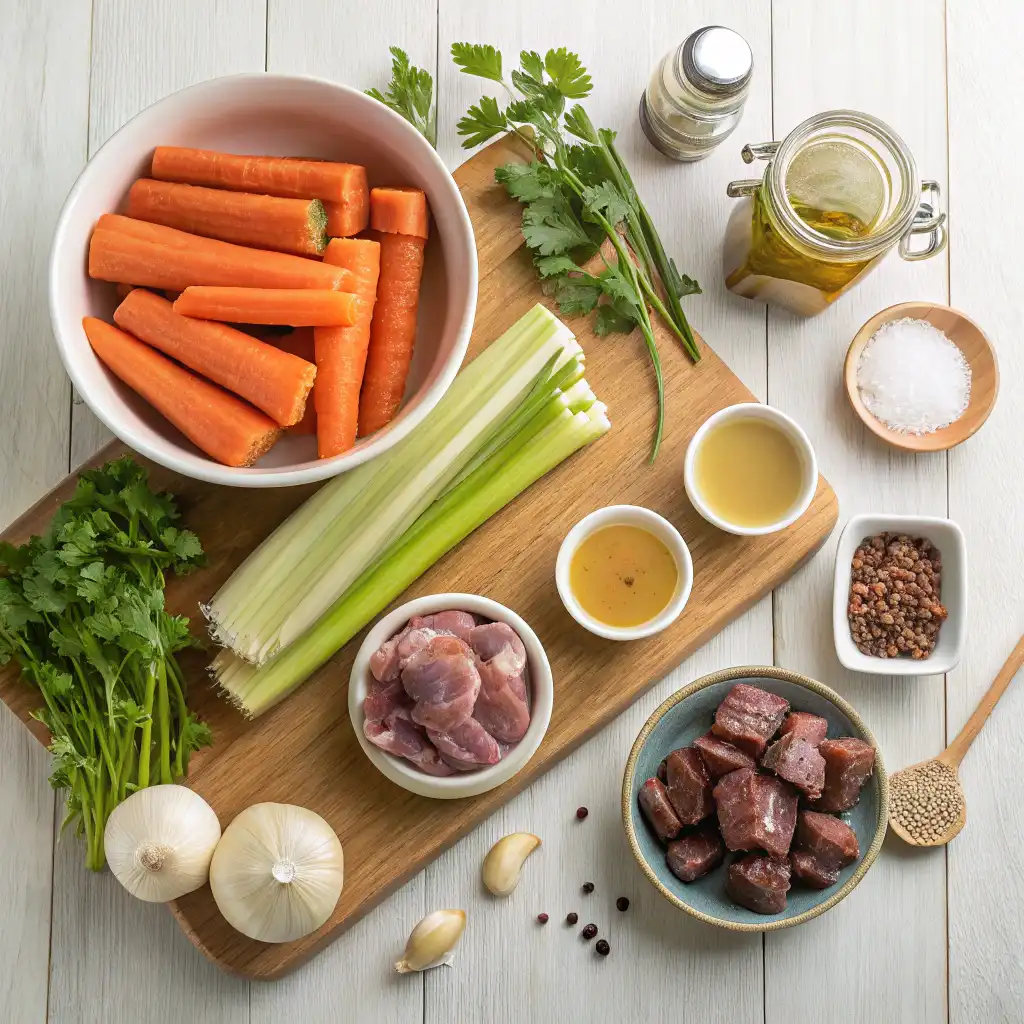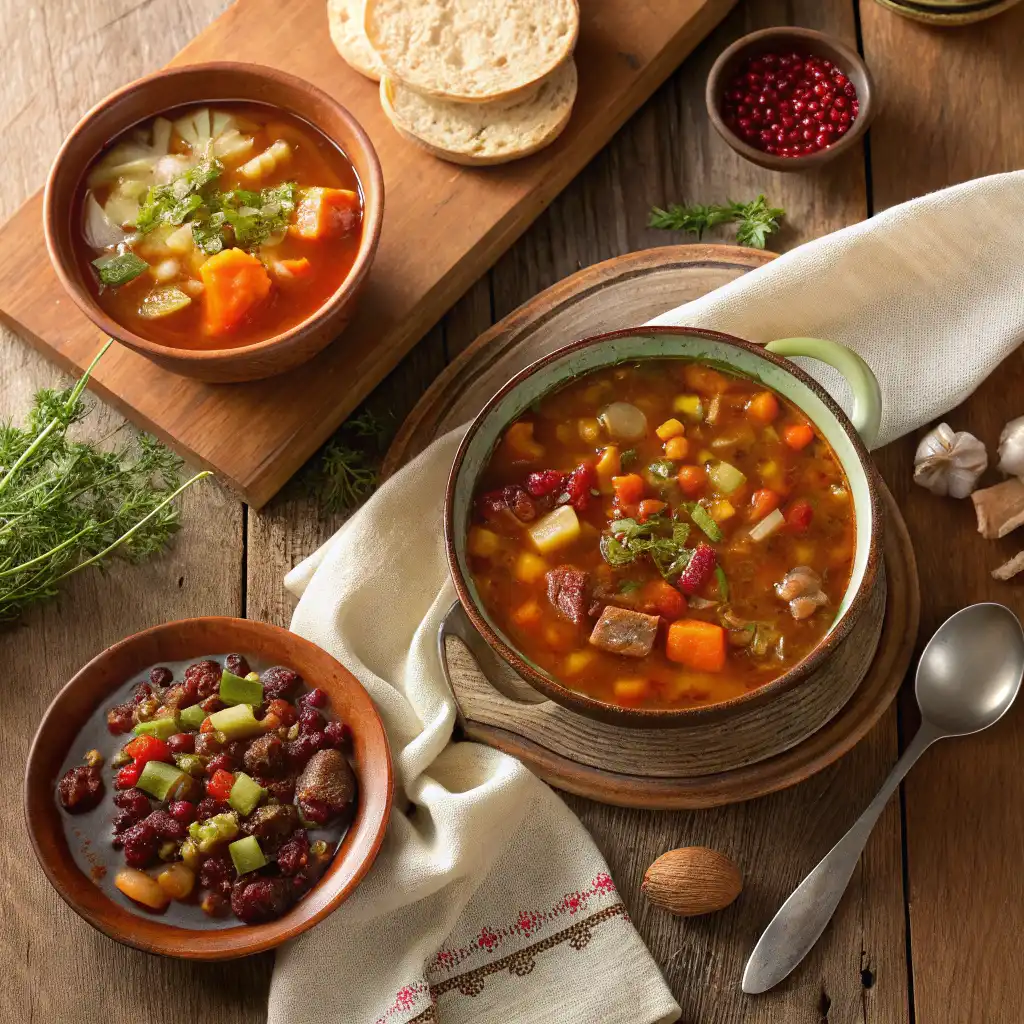Introduction:Soups & Stews
I’ve always believed there’s comfort in a bowl—whether it’s a light broth or a cozy pot of slow‑cooked stew. In this article, we’re diving into the world of soups and stews: discovering the 10 most beloved soups, exploring what sets soups and stews apart, unveiling the secrets to a truly great stew, and breaking down the thickening agents every home cook should know. If you love the smell of simmering stock and the warmth of a hearty ladleful, you’re in the right spot.
Why these soups endear us
Everyone loves a bowl that evokes nostalgia and warmth. From Sunday family dinners to quick weeknight fixes, these soups deliver comfort and flavor. Based on reader favorites from BBC Good Food, Food & Wine, Allrecipes, and more, these ten have earned a spot in home cooks’ hearts around the world.
The soups on everyone’s table
Here are the ten most popular soups—with a bit about what makes them shine:

- Chicken noodle – Classic remedy for cold days and under-the-weather moments.
- Tomato – Bright, tangy, and endlessly versatile—fresh or canned.
- Potato (e.g., leek & potato, baked potato) – Creamy comfort; top‑searched in the South
- Butternut squash – Sweet‑savory balance, with a little kick from spices .
- Carrot and lentil – Budget‑friendly, iron‑rich, and subtly spiced.
- Broccoli cheddar – Cheese lovers’ favorite, popular on Food & Wine’s list
- Corn/chowder (e.g., corn, clam chowder) – Rich, creamy, and satisfying, often with cream or milk.
- Miso – Traditional Japanese broth soup with tofu and seaweed; daily staple in Japan.
- French onion – Caramelized onions, beef stock, crusty toasted cheese top .
- Tom yum – Thai hot‑and‑sour shrimp soup, bold flavors and fresh aromatics.
Soup vs. Stew
Liquids, chunks and textures
At the most basic level, soups and stews share similar ingredients—liquids, protein, and veggies—but the key difference lies in the ratio and consistency. Soup typically has more liquid, often fully submerging its ingredients, making it thinner and spoon-ready. Stew, in contrast, holds back on the broth. With less liquid and larger chunks, it becomes thicker and almost forkable.
Cooking methods and timing
Soups generally begin by boiling, then simmering to blend flavors, and often come together in under an hour. Stews lean into that slow-simmer approach: tougher cuts of meat are seared and then cooked slowly just beneath the boil for hours, allowing collagen to melt and create a rich gravy . Some folks even use the oven for this low-and-slow braise-like process.
The Secret to a Great Stew
Technique trumps magic
The real secret to a flavorful stew isn’t in exotic ingredients but in technique. Start by searing or browning meat in batches—this creates deep flavor through Maillard reactions. Use tougher, marbled cuts like chuck or shank, and don’t skip seasoning between batches. These steps build a flavor foundation you can’t fake.
Flavor boosters
Boosting stew flavor comes down to layering aromatics: onions, garlic, carrots, and celery. Add umami-rich ingredients like tomato paste, red wine, or Worcestershire. Low and slow is key—this gives tough cuts time to tenderize and meld flavors. Home cooks swear by Reddit tips: mashed potatoes, beans, or even instant tapioca help thicken and bulk up stew naturally .
Thickening Agents for Soups & Stews
Simple starches: slurry, roux, beurre manié
Starches are your kitchen’s go-to thickener.
- Slurry: Combine flour or cornstarch with cold water and whisk into your simmering dish—they add gloss and body fast
- Roux: Cook equal parts flour and fat until golden before adding liquid—ideal for richer stews.
- Beurre manié: Blend soft butter and flour into a paste, then knead it into hot liquid to thicken mid-cook without lumps.
Alternative thickeners: veggies, legumes, nut butter
Not a starch fan? These natural thickeners are excellent too:
- Starchy vegetables (potatoes, squash) or legumes (lentils, beans) release starches as they cook—which you can also mash or purée for added thickness simplyrecipes.com.
- Grains and bread (rice, oats, breadcrumbs) absorb liquid and add body .
- Dairy, eggs, or nut butter (e.g. almond, peanut) lend creamy texture and depth, though you must temper them carefully to avoid curdling
Hearty stew ready to enjoy.

What are the 10 most popular soups?
Chicken noodle, tomato, potato, butternut squash, carrot & lentil, broccoli cheddar, corn/chowder, miso, French onion, and tom yum are consistently ranked across BBC Good Food, Allrecipes & Food & Wine .
What is the difference between a soup and a stew?
Soup has a higher liquid-to-solid ratio and is typically brothier. Stew is chunkier, with less liquid and a thicker, gravy-like consistency, often requiring slow simmering nigella.com+14
What is the secret to good stew?
Key steps are searing meat for flavor, using tougher cuts, layering aromatics, cooking low and slow, and adding thickening or flavor boosters like tomato paste, potatoes, wine, or instant tapioca .
What are the thickening agents for soups and stews?
Common thickeners include starches (slurry, roux, beurre manié), starchy vegetables, legumes, grains, bread, dairy, eggs, and nut butter—each offering different textures and flavors
Soup & Stew Storage Tips
Storing your soups and stews properly keeps flavors intact. Soups last 3–4 days refrigerated and up to 3 months in the freezer. Stews hold well for up to 5 days thanks to their thicker base. Always cool before storing and use airtight containers.
Global Soups & Stews to Try
Let your cooking take a trip around the world with these iconic soups and stews:
Bouillabaisse (France) – Seafood-packed stew with saffron and fennel.
Goulash (Hungary) – Beef stew with paprika-rich sauce.
Egusi Soup (Nigeria) – Nutty, spicy stew with greens and melon seeds.
Nikujaga (Japan) – Sweet-salty beef and potato stew.
Pozole Rojo (Mexico) – Hominy-based soup with pork and red chile.
Dal Tadka (India) – Lentil stew finished with a spiced oil tempering.
Vegetarian & Vegan Variations
Making plant-based soups and stews is easy and satisfying. Swap out meat for hearty lentils, chickpeas, or tofu. Instead of chicken broth, use vegetable stock or mushroom base for depth. Coconut milk or cashew cream gives creamy vegan soups a luxurious feel.
Conclusion
Whether you’re spooning up a cozy broth or diving into a chunky, gravy-rich stew, understanding the difference between soups and stews helps you cook with intention. Start with the technique—sear, simmer, season—and use the thickening method that fits your style. Embrace the layers of flavor, experiment with the boosters, and you’ll be creating moments of warmth and connection around the table in no time. Happy cooking!
Discover more effortless comfort food on our homepage.
For more recipes join our social media platforms:

